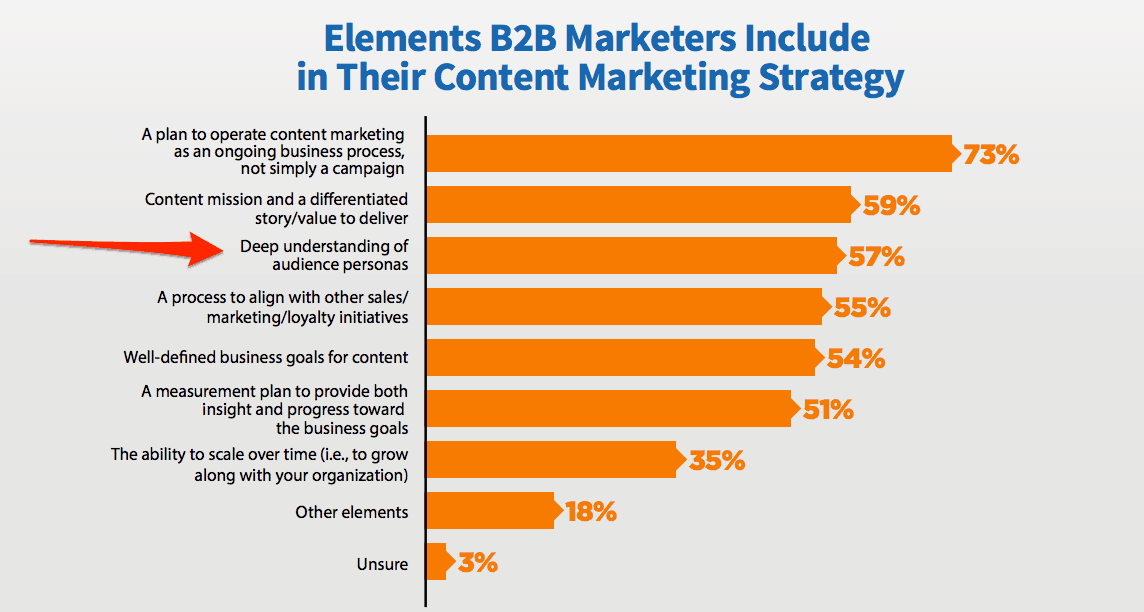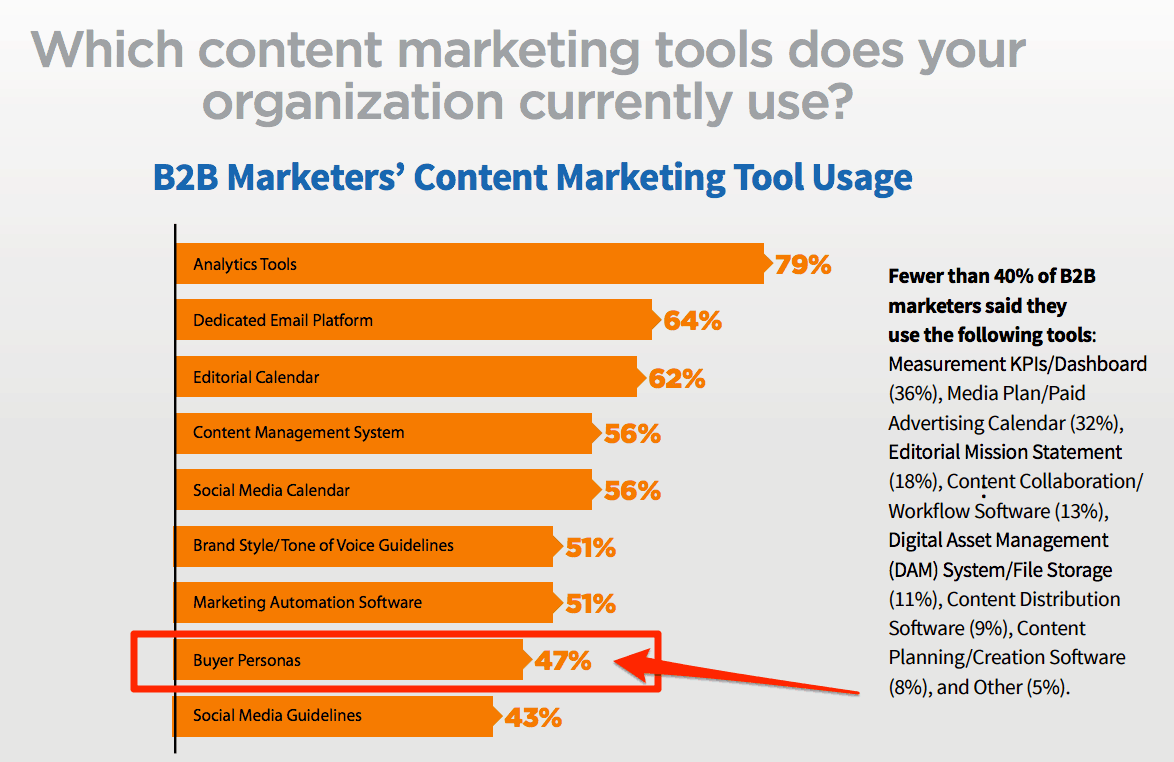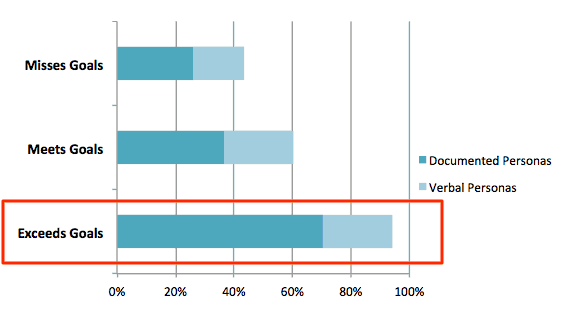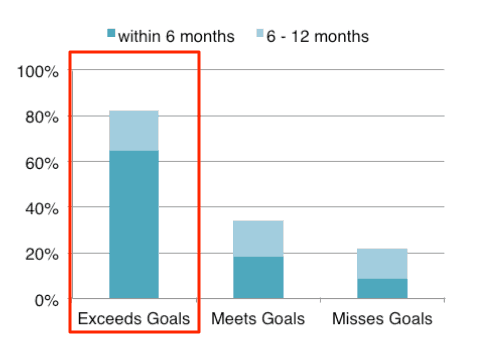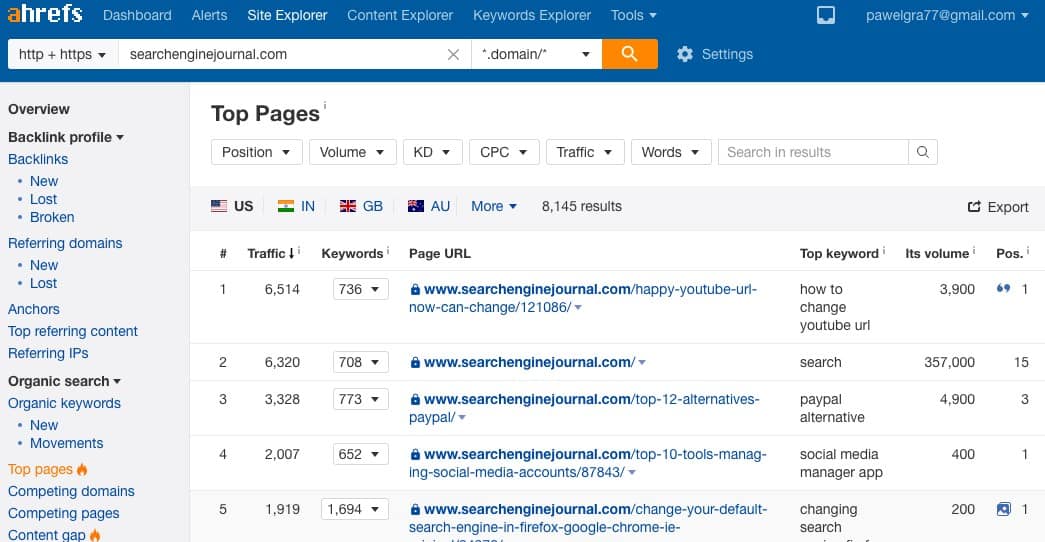This Is How To Ensure Your Buyer Personas Will Help Reach The Right Market

I’m sure this is something you already know too well – unless you fully understand the people you want to attract to your business, you’re going to struggle to deliver any meaningful marketing results.
And yes, that’s exactly why we develop buyer personas.
Having a buyer persona means that you can be more focused on your marketing, and deliver results faster.
The problem? Many businesses struggle to make personas work.
For example, B2B Partners discovered that as many as 17% of companies consider their personas ineffective.
But did you know that the problem might not be the actual persona but the type of data they’ve used to create it?
And that’s particularly true if you’ve based the ideal client profile on assumptions (which, by the way, is the most common way companies do it).
So, in this post, you’ll discover how to use data to ensure that your buyer personas represent the right audience, and can connect you with the target market.
(A quick note before we begin, though. In this article, I assume that you may already have buyer personas or are in the process of creating them. For that reason, I won’t be talking much about the process, but rather focus on validating whatever information you have about your target audience).
The Adoption of Buyer Personas
You know – given how valuable buyer personas are, I’m always surprised at a relatively low rate of their adoption, at least, when it comes to using them in content marketing.
Data from the most recent Content Marketing Institute’s benchmarks report shows that only 57% of marketers include personas in their strategy.
(image source)
And less than half of them admit to using buyer personas when creating content.
At the same time…
Various sources confirm that customer profiles are one of the key factors that can make your strategy a success. For example, last year’s report by Cintell titled “Understanding B2B Buyers” states that:
- 71% of companies who exceed revenue and lead goals have documented personas vs. 37% who simply meet goals and 26% who miss them.
(image source – the Cintell report)
- 64.7% of companies who exceed lead and revenue goals have updated their personas within the last 6 months.
(image source – the Cintell report)
Incredible, right?
So, why so many companies face challenges with creating or using buyer personas?
Well, for one, because they base those customer profiles on assumptions. Here, let me prove it to you:
According to the report by Cintell (note, the underline emphasis is mine):
“70% of companies who missed revenue and lead goals did not conduct qualitative persona interviews.”
This means that those businesses never took the time to validate any hypotheses they’ve made about their target audience. And as a result missed their business objectives.
Here’s how you could avoid making the same mistake:
How to Quickly Validate Buyer Personas Assumptions
Part 1. Discovering Customer Needs
The core of your persona (apart from the demographics data, of course) are the audience’s needs.
Knowing what challenges, problems or issues your potential customers may have in relation to your solution gives you the best possible insight into what drives their purchases.
However, for the most part, companies tend to guess those needs, without validating their hypotheses.
Verifying them, however, is a fairly straightforward process. And below, you can find three quick ways to ensure that what you think the audience’s needs match what the challenges they struggle with.
A.) Keyword Research
I admit keyword research doesn’t always get a bad rep.
Some marketers point that, since we search for information differently today, keywords no longer provide the insight into your audience.
However, so far, any research attempts aimed to prove it right haven’t delivered any conclusive results.
And do you know why? Because keywords still offer a powerful insight into what information your audience seeks online. That’s particularly true if you focus on long tail keywords that resemble the way we use Google today.
For example:
B.) Customer Surveys
A quick survey could help you validate your customers’ needs, interests or challenges.
There are many ways to run customer surveys. You could focus on researching visitors to your website (however, these typically deliver lower response rate). For example:
Or you could create dedicated surveys with software like SurveyMonkey to gain direct insight from your customers.
C.) Internal Data
The chances are that you already have a wealth of data about your audience. Support calls, live chat transcripts, sales call notes, and many other sources may give you an insight into typical challenges your customers face in their lives and at work.
Review your existing data looking for patterns – things prospects and customers alike mention regularly. The chances are that these will match your audience’s biggest challenges.
D.) Quora
I absolutely love Quora.
But no, I don’t ask that many questions there. I use the site to learn what problems keep my audience tossing and turning at night.
And you could also use it to validate your personas assumptions. Simply search for any challenge or problem you think they face, and see what pops up in the results.
Part 2. Validating Psychographic Attributes
Psychographic attributes describe such traits as personality, values they hold dear, their opinions, as well as their lifestyle.
As the guys at AdEspresso point out, in the context of a buyer persona, psychographic attributes often help answer questions like:
- What brands does your audience identify with?
- What websites do they read?
- What are their aspirations in life or hobbies they enjoy?
- What ideals or values they follow?
- And who or what influence their product choices?
And here are a couple of resources you could use to discover this information:
A.) Social Media Conversations
We live in social times. Customers share everything online, from their purchases to grievances with brands. And they also reveal a lot of the things that rock their boat.
Use software like Mention to listen to your audience’s conversations. You could focus on specific keywords or brands to begin with. And then, slowly expand to monitoring other topics they cover.
Finally, research influencers they follow online to identify the people that might have an impact on their choices and buying decisions.
B.) The Content They Read
Once you identify your audience’s favorite websites, research what are the most popular posts on those sites.
This will also give you a good insight into your target personas interests.
Platforms like Ahrefs or Buzzsumo allow identifying the top pages on practically any domain, giving you a good insight into topics that engage your audience.
And that’s it…
Hopefully, after reading this guide, you’ll have no problems with validating your buyer personas assumptions and using them to boost your marketing efforts.
Good luck.
Do you need someone to help you achieve your growth goals - then let us help you crush them? Let's chat!
Error: Contact form not found.

